Recovering from subacromial decompression surgery is only the beginning of your journey to shoulder health. Long-term care practices are essential to maintaining pain-free mobility, preventing recurrence of impingement, and ensuring the shoulder remains strong and functional. By incorporating specific lifestyle adjustments and exercises, you can preserve the benefits of surgery and avoid future complications.
This article outlines practical strategies for long-term shoulder care after subacromial decompression, focusing on lifestyle habits, exercises, and preventive measures.
The Importance of Long-term Shoulder Care
Subacromial decompression increases space in the shoulder joint, alleviating pain and improving range of motion. However, improper movement patterns, muscle imbalances, or lack of activity can lead to recurring issues. Long-term care involves building strength, maintaining flexibility, and avoiding strain to ensure the joint stays healthy.
Lifestyle Tips for Long-term Shoulder Health
- Maintain Good Posture
Poor posture can place undue stress on the shoulder joint and reduce subacromial space, increasing the risk of impingement.
- What to Do:
- Keep your shoulders relaxed and slightly back when sitting or standing.
- Avoid slouching, especially during prolonged sitting or working at a desk.
- Use ergonomic furniture or a standing desk to support healthy alignment.
- Avoid Repetitive Overhead Activities
Repetitive overhead movements can strain the rotator cuff and surrounding structures, leading to inflammation or re-injury.
- What to Do:
- Modify activities that require frequent overhead motions, such as painting or lifting.
- Take regular breaks if you cannot avoid these tasks, and stretch between sessions.
- Incorporate Shoulder-friendly Ergonomics
Everyday tasks and work environments can impact shoulder health.
- What to Do:
- Adjust your workstation to keep your shoulders relaxed while typing or using a computer.
- Use tools with ergonomic handles to minimize strain during manual tasks.
- Listen to Your Body
Overuse or sudden, intense activity can aggravate the shoulder.
- What to Do:
- Stop any activity that causes sharp pain or discomfort.
- Gradually increase activity levels to allow the shoulder to adapt.
Exercise Tips for Long-term Shoulder Strength and Mobility
Regular exercise is key to maintaining shoulder stability and flexibility. Focus on movements that strengthen the rotator cuff and surrounding muscles while improving joint mobility.
- Strengthening Exercises
Building muscle strength helps stabilize the shoulder joint and prevents undue stress on the tendons.
- Resistance Band Rows:
Anchor a resistance band and pull it toward your chest while keeping your elbows close to your body. This strengthens the shoulder blades and upper back. - External Rotations with Resistance Bands:
Attach a resistance band to a fixed object. Hold the band in one hand and rotate your arm outward, keeping your elbow bent at 90 degrees. This targets the rotator cuff. - Wall Push-ups:
Stand arm’s length from a wall and perform a push-up against it. This low-impact exercise strengthens the chest and shoulders without overloading them.
- Flexibility and Range of Motion Exercises
Maintaining flexibility prevents stiffness and improves overall shoulder mobility.
- Doorway Stretch:
Stand in a doorway with your arms at shoulder height, bent at 90 degrees. Gently lean forward until you feel a stretch across your chest and shoulders. - Pendulum Swings:
Lean forward and let your arm dangle. Gently swing it in circles or side-to-side to loosen the shoulder. - Overhead Reach with a Towel:
Hold a towel in both hands, one arm reaching overhead and the other behind your back. Gently pull the towel to stretch the shoulder.
- Endurance and Conditioning
Build endurance to support daily activities and recreational pursuits.
- Light Weightlifting:
Incorporate 1-2 lb weights or small dumbbells into your routine for strengthening exercises. Avoid heavy lifting until your shoulder is fully conditioned. - Swimming or Aquatic Therapy:
Low-impact exercises like swimming can improve shoulder strength and range of motion.
Preventing Recurrence of Shoulder Impingement
- Balance Shoulder Workload
Avoid overloading one shoulder with repetitive tasks or heavy lifting. Distribute weight evenly between both sides of your body to minimize strain.
- Warm-Up Before Activities
Proper warm-ups improve blood flow to the shoulder and prepare it for physical activity.
- Perform gentle shoulder rolls, arm circles, and light stretches before exercise or heavy tasks.
- Strengthen Core Muscles
A strong core provides a stable foundation for shoulder movements, reducing stress on the joint. Include planks, bridges, and other core exercises in your routine.
- Maintain a Healthy Weight
Excess weight can strain the shoulders and other joints. A balanced diet and regular exercise support overall joint health.
When to Seek Medical Advice
Despite diligent care, some issues may arise that require medical attention. Contact your doctor if you experience:
- Persistent pain or discomfort that worsens over time.
- Reduced range of motion or weakness despite regular exercise.
- Swelling, redness, or signs of infection near the shoulder.
FAQs
- How long should I continue shoulder exercises after surgery?
Exercises should be a lifelong habit to maintain strength and flexibility. After 3-6 months of intensive therapy, transition to a maintenance program. - Can I return to weightlifting after subacromial decompression?
Yes, but start with light weights and focus on proper form. Gradually increase weight as your shoulder strengthens. - How often should I stretch my shoulder?
Stretching daily or at least 3-4 times a week can help maintain flexibility and prevent stiffness. - Can poor posture undo the benefits of surgery?
Yes, poor posture can place excessive stress on the shoulder joint, potentially leading to recurring issues. Prioritize ergonomic adjustments and posture awareness. - Is it safe to participate in high-impact sports post-surgery?
Many patients return to sports within 6-12 months. Consult your doctor or therapist for sport-specific advice based on your recovery progress.
Long-term care after subacromial decompression surgery is crucial for preserving shoulder health and preventing future issues. By maintaining good posture, avoiding repetitive stress, and incorporating regular strengthening and flexibility exercises, you can enjoy lasting benefits and a pain-free shoulder. Consistency is key—small, sustained efforts can lead to significant long-term improvements in shoulder function and quality of life.
